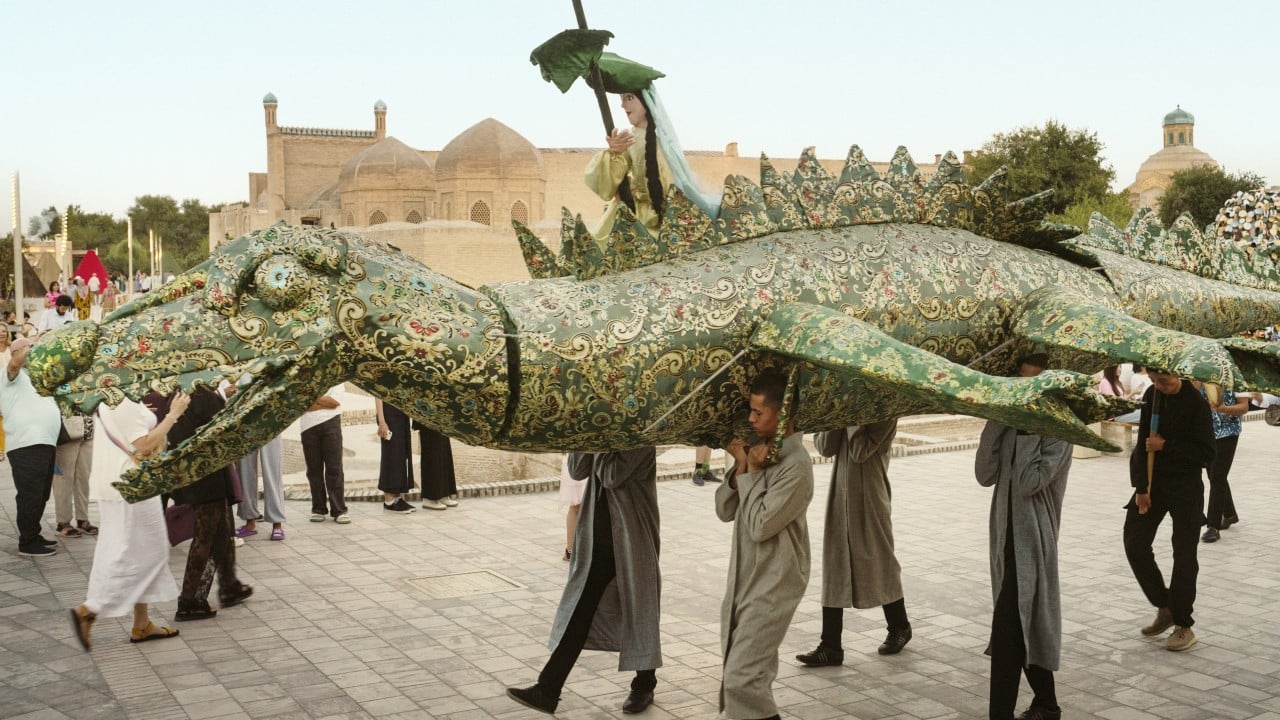Bukhara once flourished as a Silk Road hub, where travelling poets, merchants and scholars converged. But under Soviet rule during the 20th century, the Uzbekistani city was for decades sealed off from the world, with few outsiders entering.
Advertisement
This autumn, the narrow streets of the medieval city are abuzz again, but with a very different crowd: international art collectors, curators and artists gathering for the inaugural Bukhara Biennial.
Taking place in recently restored caravanserais (historic inns), mosques and madrasas (Islamic schools), the event is injecting new energy into Bukhara.
Titled “Recipes for Broken Hearts” and running from September 2 to November 20, the biennial brings together more than 200 participants from 39 countries who have created new works centred on themes of food, healing, loss and rupture.
The largest event of its kind in Central Asia, the biennial signals a new chapter for the former Soviet republic, which is now opening up to the world.
Advertisement
“Five years ago, it was hard to imagine something like this happening,” says London-based Uzbek artist Aziza Kadyri, who represented Uzbekistan at the Venice Biennale 2024. “It’s like a dream to incorporate my work here.”
She stands beside a monumental yellow fabric installation, which she created with Uzbek embroiderer Yulduz Mukhiddinova, in Fathullajon Caravanserai, one of the buildings hosting the biennial. A fantastical cloth machine inspired by her grandfather’s research on Soviet-era cotton gins, the embroidered work encircles the building’s weathered walls.

